
Adolescence is accompanied by psychological problems, so teenagers can express themselves by making cuts on their hands. First love, misunderstanding on the part of parents and peers - all this is difficult for the fragile psyche of a teenager.
Use search
Processing means
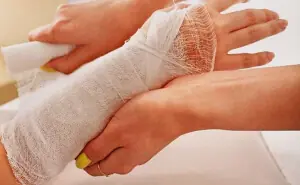
If the wound is not treated, purulent inflammation may begin and without treatment the consequences will be more severe than just a scar. It is dangerous when the places where the veins are cut are cut.
In medical practice, there have been cases when gangrene began from a simple cut, and the limb had to be amputated.
If dirt has already gotten into the wound, remove it. To do this, you can use tweezers or a sterile bandage twisted into a flagellum. Treat a clean wound with an antiseptic.
The most common medications at home:
- Hydrogen peroxide;
- Chlorhexidine bigluconate;
- Iodine.
Hydrogen peroxide will be especially effective; upon contact with the wound, it will form bubbles that will remove germs and bring them to the surface. If pharmaceutical preparations are not at hand, then a 2% solution of table salt, vodka or an infusion of pharmaceutical chamomile will do; they will not be able to heal cuts on the wrists.
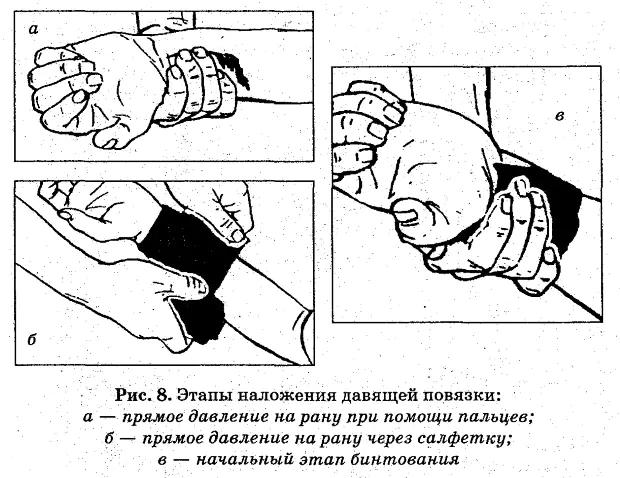
You can stick an adhesive plaster on top or wrap it with a bandage over your cut hand. For minor wounds common to teenagers, these measures will be sufficient. For deeper cuts, if a guy or girl cuts veins, the wounds need to be treated at the emergency room. If the bleeding does not stop, a vein may be affected.
You need to go to the emergency room, and not come up with an excuse for your mother. Another danger is the possibility of hitting the tendons. You need to see a doctor to maintain full functionality of your arm.

Treatment methods
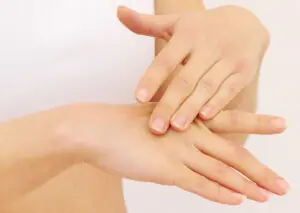
Treatment depends on their depth and quantity. Minor injuries, with a minimal amount of blood, do not require treatment methods other than conventional antibacterial treatment.
To help a deep cut heal faster, you can use special ointments. If they are deep enough, medical intervention may be required to stitch them up. You won’t be able to cut yourself painlessly, the pain will be very annoying, and the scars will remain as a reminder.
There is no point in healing cuts; unresolved psychological problems will lead to self-flagellation. The right decision would be a heart-to-heart conversation with people who have gone through a similar period in their lives, or, alternatively, turning to a psychologist.
How to hide damage
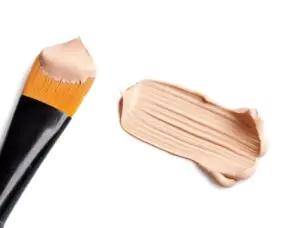
After inflicting injuries, there will be a desire to hide the cuts from the views of others.
Parents, even mothers, are unlikely to appreciate this behavior, and teachers will report it to a social worker.
For wounds, places are chosen that are easy to hide with clothing.
You can hide cuts using:
It is much more difficult to hide cut hands from family and in the hot season. A popular accessory is tattoo sleeves - no one will notice under the image printed on the fabric. The wrists are hidden under various baubles and decorations.
One option is to constantly use bandages. Having bandaged a limb, you can lie about the real reasons for the bandage, because bandages are also used for bruises.
The easiest method is to wear long sleeves.
But it is far from effective - the sleeve can ride up at any moment, revealing cut hands. Clothes will still have to be removed in different situations. There is essentially no point in hiding cuts - the secret will be revealed, this can happen even in a banal photo.
To disguise and cover up traces in conscious age, people often use tattoos and large pictures.
Teenage problems
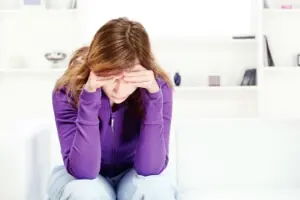
Why do they cut veins? Often one of the forms of self-expression is conscious damage to the body. A child (mostly from 13 years old) wants to scratch himself, cause himself pain, or make a wound on his arm.
For many teenagers, shallow cuts are especially common due to the accessibility of the limb.
At this age, changes occur that are completely incomprehensible to a teenager. Girls get periods and breasts grow, boys have erections and wet dreams. Pubic hair begins to grow. If you do not first tell your child about future changes in the body, it will come as a shock.

The attempt to open the veins is explained by the fact that the teenager wants to draw attention to himself and his experiences. This behavior is like wanting to pinch yourself during a nightmare. Under the influence of hormones, the worldview changes dramatically, and reality somewhat loses its boundaries.
The body becomes the only stronghold, and to confirm reality, teenagers inflict wounds on themselves. Many of them claim that along with the bleeding, all the negativity and dark thoughts came out of them. Cutting does not always indicate a desire to commit suicide.
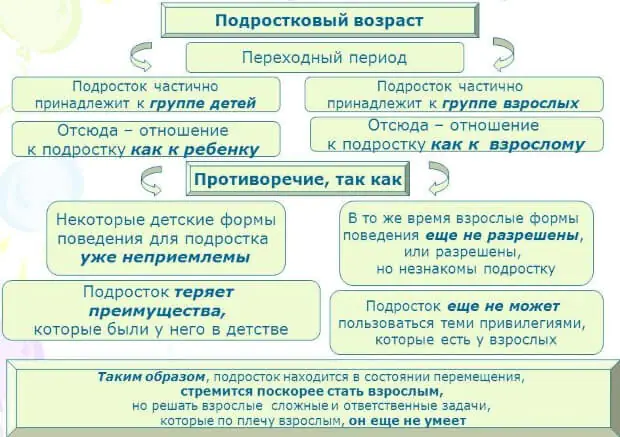
On the contrary, by throwing out negative emotions, the child confirms his desire to continue living. Suicidal people do not want to share their problems with others, and they consider showing cuts to be right, trying to attract attention. Most of these eye-catching cuts simply scratch the top layer of skin and are not life-threatening.

This cruelty towards one’s body is suppressed aggression towards other members of society. This action is similar to medieval bloodletting - it reduces internal pressure. Often teenagers do more than just harm themselves.
You can find inscriptions and memorable dates on your hands. The child makes it clear to others what is bothering him. This is accompanied by listening to depressive music and viewing corresponding images on the Internet.
After self-harm, the teenager feels relief, somewhat similar to the relief of a drug addict after receiving the coveted dose. This occurs because the body produces endorphins - happiness hormones - to drown out pain.
Videos on the topic
Healing time
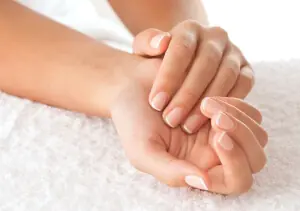
The healing process does not depend on one factor. The depth of the wounds, immunity and antibacterial treatment of the hand with a cut play a big role.
An inflamed, deeply cut wound will take much longer to heal. The cut may take several days to several weeks to heal. But if you damage the skin on your arm or leg over and over again, you will have to wait a long time for healing. And, new wounds mean real problems.

It’s bad if a child wants to close his soul and immerse himself in himself, because he has no one to talk to. In the future, this is fraught with the development of complexes, chronic depression and other psychological problems, especially among older girls.
If you notice even minor scratches on the veins of your left or right hand, then remember that the most important thing to begin with is to establish contact with others, and all problems will go away.
Why are injuries dangerous?
With cuts (even a finger) and wounds, a large vessel, artery, or nerve can be damaged. If dangerous microorganisms enter and the wound is not treated, you may even lose an arm or leg.
If gangrene begins or a non-healing trophic wound forms, they will become a life-threatening source of infection. In medical practice, there are cases when a decision is made to amputate to save a person’s life.
At the inflammatory stage, complications such as purulent leaks and phlegmon occur. This occurs when the pus that forms in the wound does not come out, but into the surrounding tissues or into the cavities between them.
If, after receiving an injury, the condition of the whole body began to deteriorate sharply, fever and weakness appeared, then you should urgently consult a doctor.
Caring for deep injuries
If the wound surface is regarded as large, even in the subjective opinion of the wounded person, seek medical help. Cuts longer than 1.5-2 cm will take a long time to heal on their own, cause discomfort and will probably lead to complications.
See your doctor. The same applies to wounds that bring unbearable pain (possible damage to a nerve branch), or wounds that are accompanied by profuse, continuous bleeding.
Medium-sized wounds and cuts cannot always be treated with surgery. But when any wound is sutured, it will always heal faster.
Medical care includes: treatment of the wound, excision (circumcision) of the edges of the wound, stopping bleeding, suturing. Sometimes sutures can be placed a little later, when the inflammatory process in the wound decreases.
The wound dressing must be changed daily. In the first week, a wet-dry bandage is applied, then they switch to ointment ones.
Antiseptic drugs are used in wet dressings. Ointments for treating wounds consist of antimicrobial agents and substances that promote healing. For example, ointment is used: levomikol, levosin, methyluracil.
At the same time, a prophylactic course of broad-spectrum antibiotics is prescribed.
How to hide
I don’t want to answer unnecessary questions at school, from my mother or neighbors, about what these suspicious stripes are on the child’s forearms or legs. The most important question is how to get rid of characteristic scars. You can disguise small marks from a blade on your hand using a regular foundation with a dense texture.
- Green dense corrector to disguise acne, and on top - powder or foundation;
- Artistic tattoos;
- Bracelets, baubles;
- Clothes with long sleeves.
Later, when the cuts are completely healed and healed, laser skin resurfacing can be done. But first you will still have to consult with a good dermatologist to determine how safe and effective the procedure will be.
Loss of consciousness
Due to excessive blood loss or fear of blood, a person who receives a deep cut may lose consciousness. Everyone should know what to do in case of a cut, if the victim has fainted or is in a pre-fainting state, because such a condition can be life-threatening.
To prevent fainting, you must:
- Open windows and doors wide, creating a draft and air flow from the street;
- Unbutton the victim’s collar, loosen the tie, remove jewelry from the neck that may interfere with the flow of oxygen;
- Give the person cool water to drink;
- Turn on the air conditioner nearby;
- The victim should breathe deeply if he is still conscious;
- A person on the verge of fainting has his upper lip and earlobes massaged;
- Rubbing your cheeks vigorously helps prevent you from fainting.
If these methods do not give the desired result, the cotton wool is soaked in ammonia and given to the person who is fainting to sniff.
When do you need a doctor?
If a person cuts himself, he should consult a doctor if:
- The wound is more than 2 centimeters deep;
- The bleeding does not stop for more than 10 minutes;
- There are glass shards or other objects in the wound;
- A person cuts himself with a contaminated object;
- When a child or an elderly person is injured;
- Change in skin color, numbness and presence of pus on the second day;
- General hyperemia and weakness;
- Poor wound healing after a week.
If you get a cut from something dirty, you should get a tetanus vaccination.
Victoria, Evgenia and Marina
Marina (the mother of 7th grade student Lida) begins our consultation with a trembling voice: “For about a month now, Lida has been walking around the house in long sleeves and pants. She said that she was freezing in the apartment, it was cold, although before she always wore T-shirts and shorts. And yesterday I accidentally looked into her room when she was changing clothes - and she had scars all over her hands! These red streaks between the wrist and elbow on both hands. To my exclamation “what is this?!” she monotonously answered “everything is fine" and left from the conversation. I almost went crazy. Horror. We weren’t like that! Well, something will happen - you’ll go with friends, maybe even smoke, party until night. But cutting yourself. What is it? As I saw it - not I’m finding a place for myself, I’m afraid that she’s planning suicide.”
My mother’s confusion and fear evoke my sympathy and understanding. Children today are not at all what their peers were 20, 10 or even 5 years ago. They are different and this deprives the parent of the opportunity to rely on his teenage experience and use those means and methods that once made it easier for him to live through a difficult age. They're complicated and this makes it difficult to understand what is in the soul of today’s high school students, who can easily cut their hands like this and calmly say that “everything is fine.” They are secretive and often incomprehensible - which confuses you when talking with your son or daughter, when the most friendly and cautious interest is met with a stubborn “You don’t understand me!” Get out of my room!

And when passions around the Death Groups, which have barely subsided in the media, suddenly flare up again around the arrest of one of the “curators”, and long messages regularly arrive in your personal messenger, starting with “Urgent! Suspicious hashtags...Suicidal information war against our children...Maximum repost!!” , then the parent becomes completely scared and somehow uneasy.
To understand what you should be afraid of, and where it is important not to blow water, in order to know in advance what to do if your beloved child cuts or injures himself, read the instructions below.
I dedicate it to Victoria, Evgenia and Marina - mothers whose pain, confusion and willingness to positively influence their child encourage us to look at what is happening with modern teenagers from another point of view - from the point of view of how to be a parent in all this difficult and It’s not a time of hopeless history.
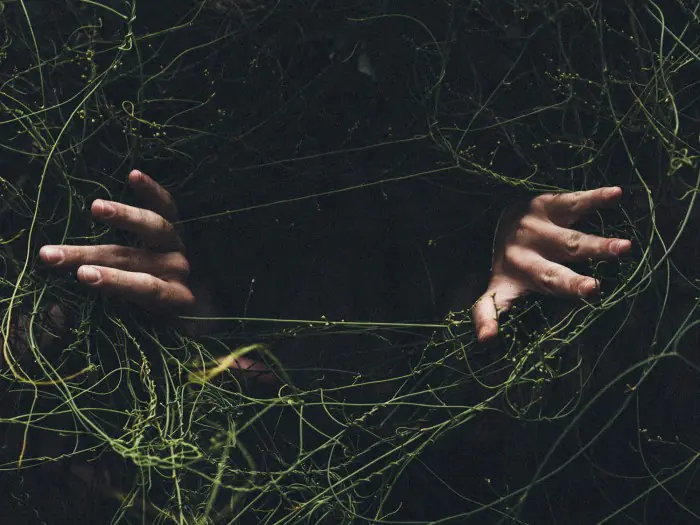
That is, if you notice scars, this does not mean at all that the child is close to suicide. This may be true, but not always. Self-harmful behavior is a separate phenomenon, associated more with how a teenager feels about himself and how well he can cope with the problems that arise in his life, rather than with the intention to die. I am not encouraging you to relax now, let go of the situation and look at cuts as just another feature of a difficult age. I want you to maintain, as far as possible, a stable attitude and refrain from sudden movements - conversations, clarifications and emotional scenes - at the sight of abrasions. If you see abrasions, the first thing to do is to shift the focus of attention from your own fear for the child that naturally arises in such a situation - to search for answers to the question of what prompted him to do this and how I can help him.
You will feel more aware of the situation if you ask your child a direct question: “Are you thinking about suicide?” Children answer it truthfully.
This pain can be different. There was a quarrel with friends, there was a conflict at home, I really didn’t like myself in the mirror - and the teenager’s soul is filled with joyless experiences to the point that he simply cannot bear it and wants to somehow alleviate his condition. When inflicting a wound, teenagers switch from internal sensations to sensations of rawness on the skin and they feel a little better. That is, such behavior is not nonsense, and not a whim, and not an overkill. This is a direct invitation to us adults to take a close look at what is going wrong in a teenager’s life and to do everything we can to eliminate the source of the worries.
Refrain from vigilant questioning and searching pockets and reading hidden diaries, which would be humiliating for any teenager. Take a broader look at the situation – ask the class teacher if everything is okay at school, talk to your friends’ mothers about how the children communicate there, look at what your son/daughter posts from your pages on social networks.
Get rid of self-blame about the fact that you cannot get your son/daughter to have a detailed conversation. Secretiveness happens to teenagers. And rather than beating yourself up, it’s better to think about which adults your teenager can be frank with now. If you have an understanding coach in the section, you can ask him to talk with the teenager, if the class teacher is sensitive and close to the child, turn to him for the same. You can contact a competent psychologist, because it often happens that children open up in contact with a person who is not included in the inner circle of relationships.
A teenager needs to have the so-called “guide” to adulthood - a person older than him (not a peer), with whom he could consult and share painful issues. Sometimes these are grandparents or older sisters/brothers, sometimes they are a psychologist, or for believing families, a priest. And if this person hasn’t existed yet, find him. Independent, quiet and “problem-free” teenagers are an alarming option for growing up, which is most often followed by deep loneliness. And it can push a teenager to hurt himself.
These three steps will help you navigate the situation, cope with the shock, and begin to take specific and necessary actions. The good thing is that you can do them not alone, but in collaboration with an experienced adolescent psychologist, whose help is often needed by a teenager who cuts himself.
“Nobody understands me (hears me, doesn’t love me, doesn’t respect me, doesn’t notice me)”, “I’m ugly (stupid, stupid, fat, thin, good for nothing)”, “Nobody needs me (I’m in everyone’s way, everyone hates me) , I got everyone)”, “I don’t need anyone either (everyone got me).” From time to time such thoughts come to the minds of all teenagers. But for some they become an obsession, a mania.
Dangerous examples from social networks play their role. For example, popular photos of Jungkook on VK, which show scars on the face and marks on the hands of a young popular performer, depressive pictures, poems about suicide and the destruction of one’s own body. And then the child decides to take a desperate act, without thinking about its consequences.
The adults who are nearby should do this for him. It’s too late to blame yourself for the missed moment; all the most tragic things have already happened. And now, if you find a cut vein on the hands of a teenager, you need to act urgently to prevent the fatal outcome of the tragedy.
First aid
If a cut on the wrist is found, what to do, how to treat a teenager? First of all, you should not panic, scream or swear. It is necessary to examine the affected limbs and provide the necessary first aid.
If the cuts affected the veins, you should immediately call an ambulance and hospitalize the teenager. Wounding a vein on any part of the body leads to large blood loss and irreversible consequences; with serious wounds in adolescents, you will not be able to stop the bleeding at home on your own. If the veins are intact, you can do without doctors, everything will remain within the confines of your family and apartment.
You will need the following:
- Inspect the cuts for dirt and foreign objects getting into the wounds. If any are found, they are removed with tweezers or a sterile bandage twisted into a tourniquet.
- Wash the surface of the skin with hydrogen peroxide or another antiseptic.
- If you don’t have anything at hand, you can disinfect it with vodka, medical alcohol, or chamomile infusion. Or, as a last resort, just soapy water.
- If the bleeding does not stop after this and a lot of blood still flows out, you should apply a pressure bandage to the wound. You can simply press it with your fingers through a napkin.
- Small cuts on the wrist are covered with a plaster. Extensive wounds should be bandaged.
Such measures will help avoid infection and suppuration. This is extremely important; infected cuts on the hands with a blade can cause an abscess and widespread sepsis of the body. A teenager can lose a limb and even die if the infection spreads throughout the body.
What to do next
Light, small cuts on the wrists do not require any special treatment. It is enough to regularly treat them with antiseptics, for example, brilliant green, change the patch and bandages.
Strong, deep cuts on a guy’s or girl’s wrists take a longer period of time to heal; you won’t be able to quickly get rid of wounds and marks. It can be accelerated if, in addition to antiseptic solutions for rinsing and disinfection, special ointments are used. What drugs should I pay attention to? Healing is promoted by:
- Solcoseryl. An ointment based on calf plasma extract helps to quickly heal deep cuts without consequences. A thin protective film forms on the surface of the wounds, blocking the path of pathogenic microorganisms from the outside. And under the film there will be an active process of wound healing and tissue restoration thanks to the active components in the product that stimulate metabolic processes. The ointment has contraindications, so you must read the instructions carefully before use.
- Vishnevsky ointment. It does not directly promote tissue restoration, it acts more like an antiseptic, but this is also very important in the healing process. The wounds will not fester and become inflamed, and will heal faster.
- Rescuer. Helps well with shallow cuts and abrasions. It also protects against infection in open wounds and inflammation, accelerates metabolic processes and thereby stimulates the rapid healing of skin damage.
Any of the listed products is applied in a fairly thick layer to the damaged areas of the skin, and a bandage is applied on top. It needs to be changed at least 2 times a day. Cuts heal from 2 days to 2-3 weeks.
How to hide the consequences
Naturally, no one wants to answer unnecessary questions at school, from mom or neighbors, about what these suspicious stripes are on the child’s forearms or legs. Therefore, the most important question is often how to get rid of characteristic scars. You can disguise small marks from a blade on your hand using a regular foundation with a dense texture.
The following methods are also used:
- green dense corrector to disguise acne, and on top - powder or foundation;
- artistic tattoos;
- bracelets, baubles;
- clothing with long sleeves.
Later, when the cuts are completely healed and healed, laser skin resurfacing can be done. But first you will still have to consult with a good dermatologist to determine how safe and effective the procedure will be.
Summary
If a guy or girl between the ages of 13 and 17 inflicts cuts on their hands with a blade, even small and frivolous ones, not related to a suicide attempt, this is an alarming signal for everyone who is nearby. How to remove scars on the body is an important, but easily solvable question.
It is more important to find out why the teenager is doing this. Hiding cuts under foundation, tattoos, or, at worst, long sleeves is only a small part of the enormous work that will need to be done on a teenager.
As practice shows, very rarely parents can cope with the situation on their own - children do not open up to mom or dad. You need the help of an outsider, definitely an older man or woman. This could be an older brother, sister, uncle or aunt, grandmother, even a sports coach. Sometimes the only way out is to seek help from a professional. Now there are special rehabilitation centers for children who have suffered from the influence of social networking communities and are prone to self-harm and suicide.



